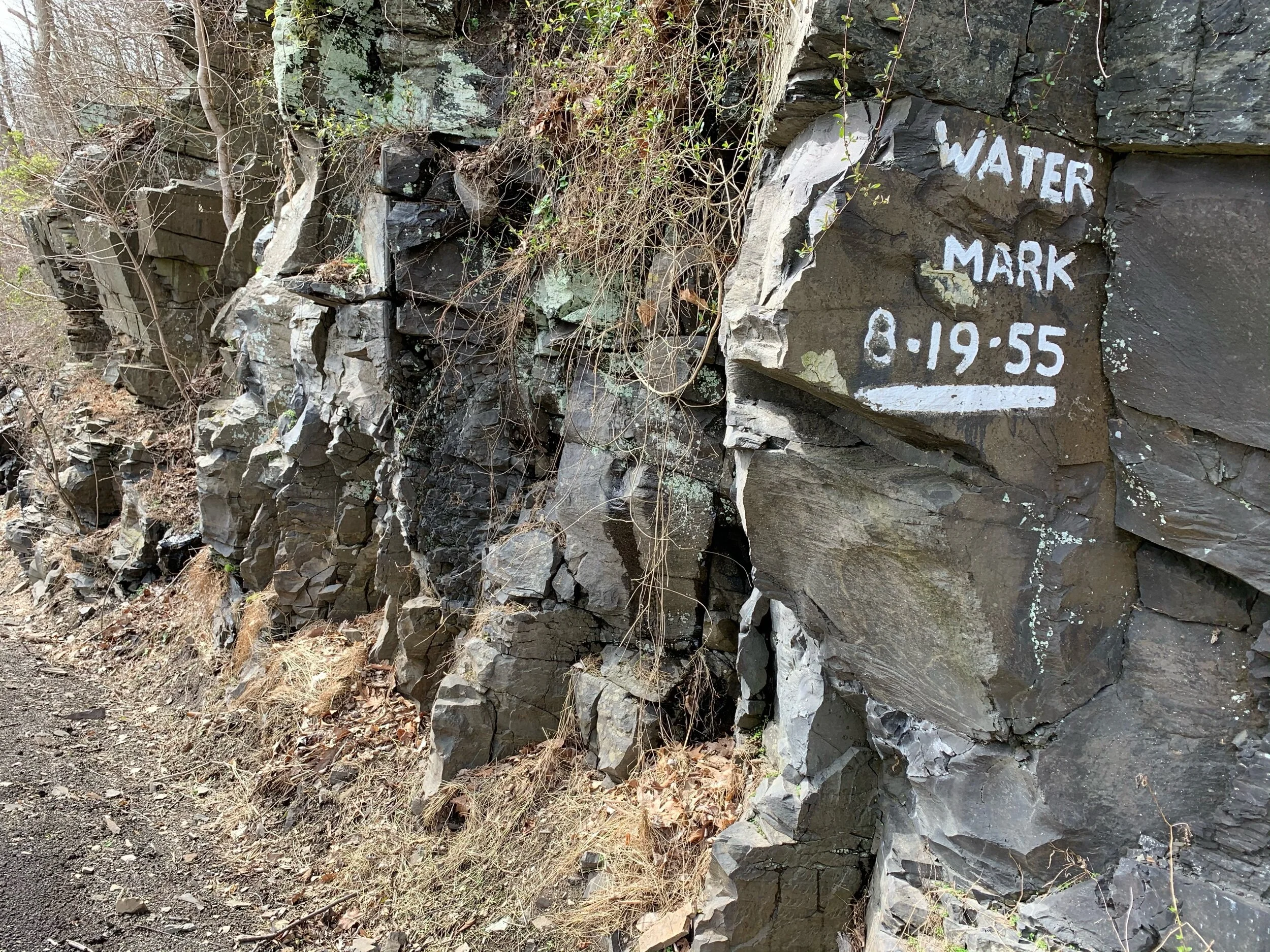Rides We Like: Recalling ‘The Big One’
(2020) To live in Bucks County, Pennsylvania, is to access diverse means of leisure. While our creakybottombracket.com offices dwell at an East Coast loftiness of more than 500 feet elevation, with ease we can descend to the Delaware River and its quaint towns. With the recent pandemic, we took advantage of the lack of traffic to roll down River Road, the Pennsylvania roadway that borders the Delaware River. Every few miles we were reminded of a past event where nature flexed its muscles.
To pass through a river town is an experience. Town structures crowd the roadway in an effort to distract you enough to visit. Often we approached buildings so close to the road, we looked to see if passenger side view mirrors clipped the corner. What an experience it must be to sit in the living room of a river home and hear a motorist nearly coming through your wall. These nestled towns have storied pasts as evidenced by ancient structures welcoming tourists. Nearly every restaurant has a backside to the menu telling how the location served the country in the past.
To ride River Road is to have fits and starts. During a healthy year one can struggle to pass through the throngs of visitors in New Hope in a timely fashion. There’s the old burger and ice cream joint called Dilly’s a few miles north in Center Bridge. Lumberville has the Black Bass where it is rumored George Washington was refused service during the Revolution. Through Devil’s Acre to Erwinna artist studios dot the roadside. One could continue northward to eventually access Easton and beyond. These days the communities have quietly pulled in their flags and signs, shut and locked their doors, and some have pulled their shutters closed because they can.
I have always liked river towns because of their shared characteristics with mountain towns. To pass through river towns is much like roads in Vermont where motorists zip along at 55 mph, and slow down to 35 mph to enter a cluster of buildings. It is often a gas station along with some houses but that’s usually it. One constantly wonders how people get along without visible schools, grocery stores, or offices. I have often said I could live in a river town but would start chomping fingernails every time it rained. The Delaware River continues to be the largest undammed river east of the Mississippi. Occasionally it reminds us of its powers. Though there have been some big ones, nothing compares to the flood of 1955, which was so big, it is simply referred to as ‘The Big One.’
To have one hurricane hit the area is fairly uncommon. To have two hurricanes hit is rarer, but to have two hurricanes hit back-to-back is almost unheard of. Hurricanes Connie and Diane hit the area in August 1955. These storms were helped along by a dry summer where the ground refused to absorb the precipitation. On August 7 alone, nearly three inches fell on Trenton, NJ, in one day. Less than a week later, five inches would fall in a 24-hour period. Over the ten-day period, a foot of rain had fallen, and the River responded by destroying some fifty bridges crossing it. In Easton, PA, the Delaware River measured 43.7 feet, a line that has been thankfully untouched since.
During this time of isolation, residents and tourists have lightened the demand on River Road. This county has been ridden enough to know that River Road traffic, during normal times, is not worth the effort. Until recently the road was in such poor condition, it was unsafe to ride the right-hand-side without risking cracked wheels. After resurfacing it was thought to be rideable only to have motorists decide to deal a couple of brush-backs. In recent weeks the road has been silent and we took the moment to photograph one of the many markers along the Scenic Roadway. Though easier to see markers while heading southbound and north of Lumberville, several markers highlight the Big One’s height in 1955. They are painted in white on the brown shale cliffs lining the road. Recent floods have been marked, but they hardly approach the 1955 line.
It was today’s ride where it felt right to zip down River Road. Only the occasional car passed by, deviating from the norm. This can be a great time trial road; I even suggested as much should the United States have its own Grand Tour to showcase tourist locations. The route was supposed to be grander but constricted tighter around our departure location. Only after a couple of turns was River Road considered. When it was taken it was a last-moment thought to snap a photo of one of the many 1955 flood markers. There was a long pause between the snapping of the photo and the next motorized vehicles - two motorcycles - to pass me by. These are strange times, but River Road has seen plenty strange times. One thing is certain, while the asphalt I rolled over was submerged 65 years ago, it was dry today. Better times now with trying times in history books. Soon those shuttered river town businesses will put out their flags and signs, open their doors again, and hopefully, after all this social distancing, the closeness of the town to the road will feel closer. We could all use that closeness.




